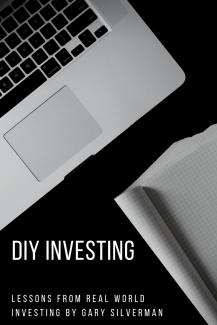
The Target Dating Game
By Gary Silverman, CFP®
Here’s what’s been happening in this column: 1) I’m telling you how to do your own investing; 2) I’m having you put most of your money in a Target-Date fund; and 3) You now know that while Target-Date funds do get less risky as the date gets closer, they do not get to a point of no risk.
Why no risk? Because most of these funds were designed to take you through retirement, not stop when you get there. As such, while income is one part of the investment mix, growth is still needed. Your retirement will hopefully last two to three decades. Living tends to get more expensive in those later years. If you had a portfolio that didn’t grow, your purchasing power would shrink and so, too, would your standard of living.
So, the Target-Date fund is there to provide growth, across time, in your portfolio. It will have a good-sized holding of stocks and other growth-oriented securities inside of it. Its value will bounce around. This volatility is a problem if you’re at the point of living off of your investments. If a year like 1987, 2000, or a 2008 happens when you are retired and drawing from this fund, you would be forced to draw money out when the fund is down. This violates my buy low sell high philosophy. (More on that next week.)
Another problem with Target-Date funds (heck, a problem with all mutual funds) is that these are one-size-fits all investments. They are not customized for you. The investment committee running them builds the asset allocation mix inside them to fit what they think is the best mix for people retiring on that date. They don’t know you; they don’t know your circumstances; they don’t know your risk profile.
When I am building a portfolio for my clients, I will add bonds in order to lower the volatility. You can still do this (to a point) and use the Target-Date Fund by choosing a different date.
You can then go on the web site of the mutual fund company you want to use and see what the equity exposure is for the various Target-Date funds. There’s nothing to force you to pick a 2030 fund if you are retiring in 2030. So, if you find that the 2030 fund has more stocks in it than your risk tolerance can handle, look at the 2025 or 2020 fund and see if that matches better. Likewise go to a later date if the 2030 fund is too boring for you, that is, if you can handle more exposure to stocks.
But don’t start swapping back and forth depending on what you think the markets are going to do, or if you’re just sure they are going up, or sure they are going down. Select for your overall risk tolerance, not as a way to time the market.
Gary Silverman, CFP® is the founder of Personal Money Planning, LLC, a Wichita Falls retirement planning and investment management firm and author of Real World Investing

